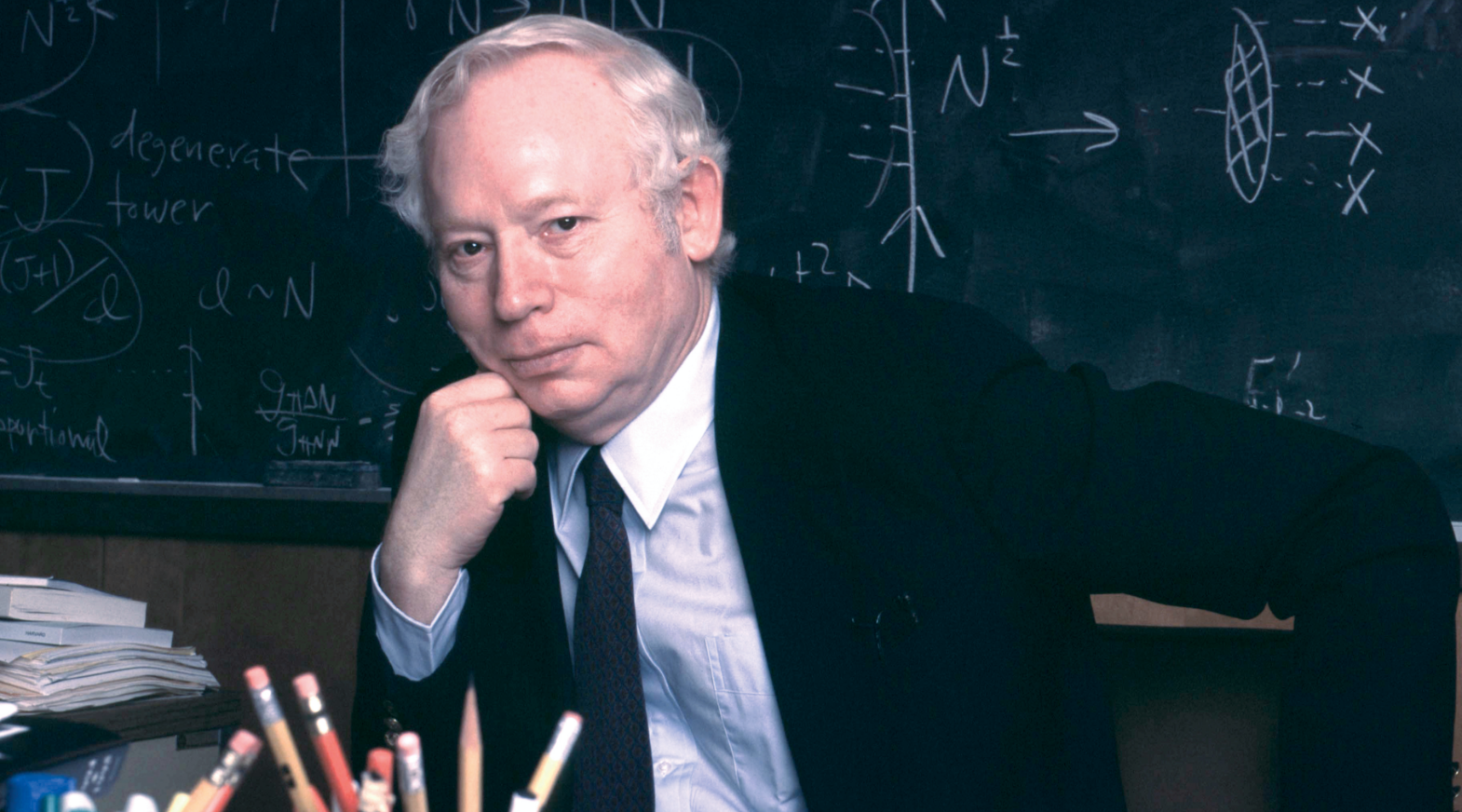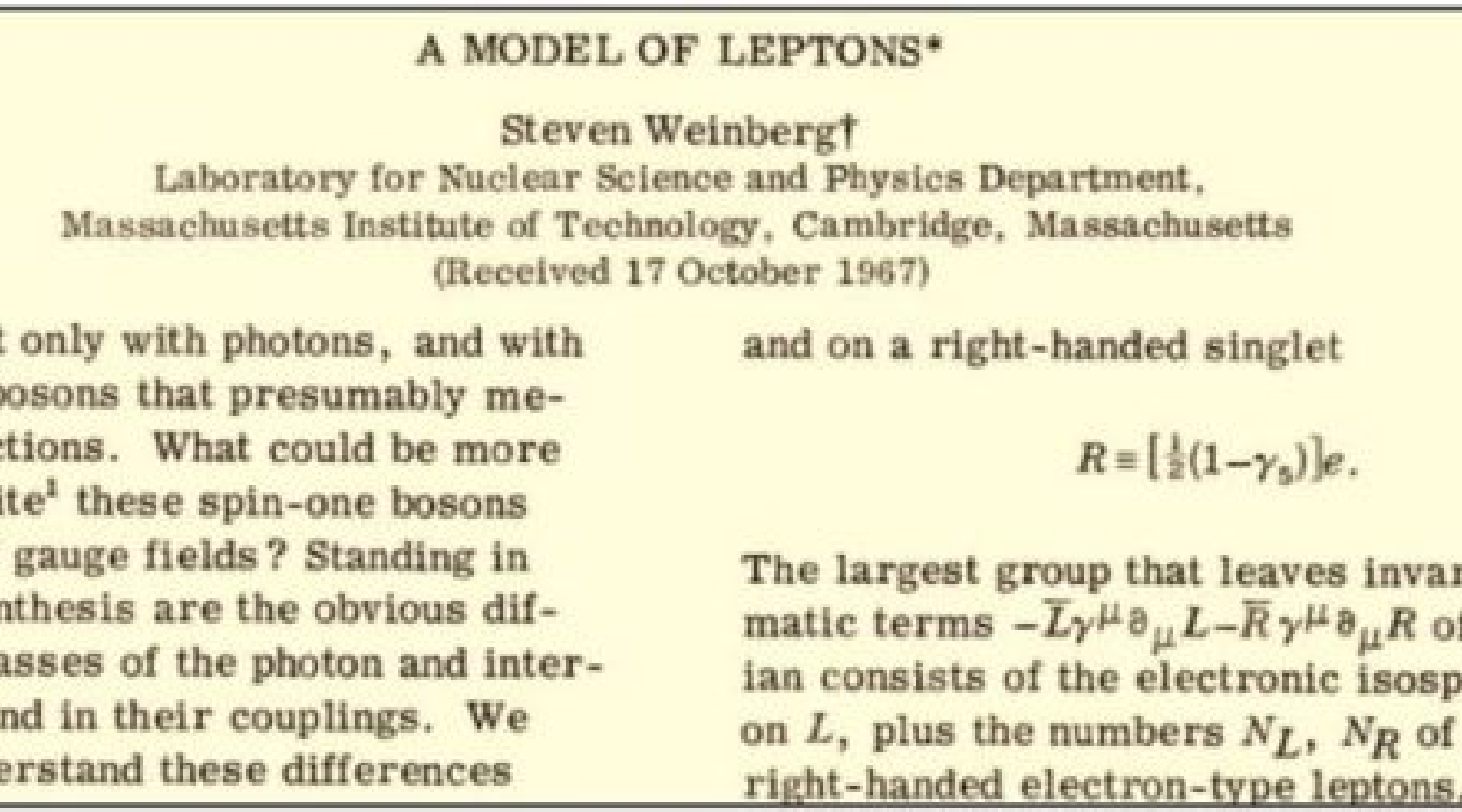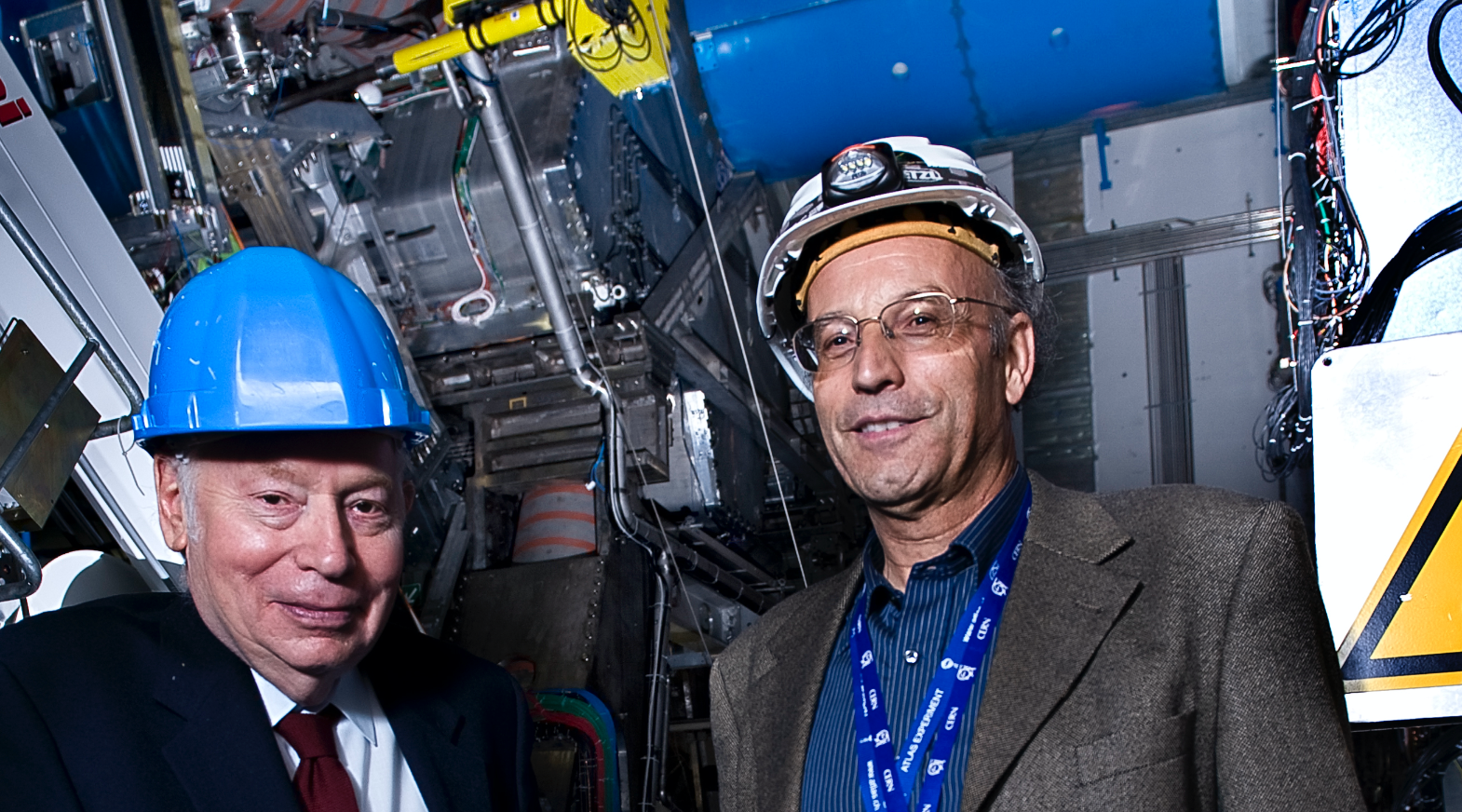Steven Weinberg - Death of a Star (1933 - 2021)
-
- from Shaastra :: vol 01 edition 02 :: Jul - Aug 2021

The theoretical physicist and astronomer brought a simplicity to our understanding of the universe - and communicated a joy in the beauty of science.
Possibly Steven Weinberg's most famous scientific paper was published in 1967. Even today, ‘A Model of Leptons' is regularly described as "seminal" and "iconic", the theory it lays out "simply written" and "neatly constructed" and "elegant".
Yet ‘A Model of Leptons' is just three pages long.
That startling fact might just be a measure of this theoretical physicist and astronomer who died on July 23. The paper offered a theory that explained interactions between fundamental particles of physics, and suggested that it would be useful to search for three specific ones (later to be called the W, Z and Higgs particles). It predicted that the Z particle, in particular, would generate "weak neutral currents".
You don't need to know what all these terms mean to understand the impact they had on the conduct of science in the years since, though it took a few years for physicists to fully grasp the implications of the paper. Once that happened, by 1976, it had become the most-cited research paper in high energy physics, and it stayed atop that list for an astonishing 30 years. Over a half-century later, it remains relevant and important: one estimate is that today, it is cited by other scientists three times a week.
Truly, some of the most ambitious efforts in experimental physics were inspired by Weinberg's succinct three pages. At CERN, the European Organization for Nuclear Research, in Switzerland, for example, scientists first found evidence of those "weak neutral currents", found evidence of the W boson, and in 2012, used the Large Hadron Collider to show that the Higgs boson exists - a discovery that made headlines even in non-academic papers.
"It's what keeps you going as a theoretical physicist," Weinberg once said about that experimental confirmation of his theories at CERN, "...to hope that one of your squiggles will turn out to describe reality."

Steven Weinberg was born in New York in 1933. Science was an early passion, which is why, as a teenager, he studied at the well-known Bronx High School of Science. He graduated at 17 and went from there to Cornell University to earn an undergraduate degree in 1954. Three years later, he completed a PhD at Princeton University. In the years after that, he was on the faculty at the University of California, Berkeley, then at Harvard University from 1966, winning the Nobel Prize in 1979. In 1982, he moved to Austin and set up a theoretical physics group at the University of Texas, staying there for the rest of his life. Besides the Nobel, he collected a slew of other scientific awards. Last year, he won the $3-million Breakthrough Prize in Fundamental Physics, sometimes called the 21st Century Nobel. It recognised his "continuous leadership in fundamental physics, with broad impact across particle physics, gravity and cosmology, and for communicating science to a wider audience."
Those lines capture some of the essence of the man. While that 1967 paper was ground-breaking and eventually led to the Nobel, he remained an accomplished, influential physicist throughout his career. What's now considered the Standard Model of particle physics helps us understand how matter and forces in our universe are linked to each other, and the model owes a lot to Weinberg's work. He showed that it was possible to combine electromagnetism with what's called the "weak interaction" between particles.
He always claimed that he didn't actually start work with a plan to unify these forces. But at the time, physics was in a state of some chaos and uncertainty - a strong force here, a weak one there, these particles over here, but how did they fit together? Viewed in a certain way, one of the particles would have to be very massive. But viewed another way, the theory needed the particle to lack mass altogether. What was the theoretical framework in which contradictions like this coexisted - if they were actually contradictions to begin with, if they were not actually resolved? What might help us find a degree of consistency in it all?

Weinberg believed that there is an overarching theory in physics that would explain so much that we still don't know about forces and particles.
Weinberg's work sought to answer such questions. Yet, as vital as the Standard Model is to physicists' understanding of the universe, Weinberg believed - as other physicists do - that there is an overarching theory in physics that will explain so much that we still don't know about forces and particles. For example, at very high energies, there's evidence that what physicists know as the electromagnetic and weak forces combine into an "electroweak" force. Can we find a single force that embodies the merging of the weak, the electromagnetic and the strong forces? Where does gravity fit? What is the theory that accounts for these threads?
Of course, this Grand Unified Theory remains a dream, defying the efforts of Weinberg and plenty of other physicists as well. But he pursued these questions throughout his career.
He also grew ever more interested in astronomy. This began after the discovery of cosmic background radiation, the so-called "leftover" radiation from the Big Bang, in the 1960s. Weinberg's work led him to write the book Gravitation and Cosmology in 1972, still a respected text. Describing a course he taught in 2017 on astrophysics, he wrote: "The course will cover various topics in astrophysics such as stars, both single and binary, the interstellar medium, and galaxies. It will emphasize calculations that can be done elegantly and analytically, with a minimum of complication." Note the continuing emphasis on elegance and spareness. (As an aside: I took several astronomy courses at the University of Texas in the late 1980s. I still regret never getting to meet Weinberg.)
But Weinberg had interests outside academia too. One of his lifelong passions was nuclear disarmament. He was a consultant for a while with his country's Arms Control and Disarmament Agency (ACDA), whose mission was "formulating, advocating, negotiating, implementing and verifying effective arms control, nonproliferation, and disarmament policies, strategies, and agreements." (ACDA was absorbed into the U.S. State Department in 1999.) He was a staunch supporter of Israel, once remarking that boycotts of that country "indicated a moral blindness for which it is hard to find any explanation other than antisemitism."
He believed deeply in the need to talk about the worth and joy of science to the outside world. But for him, this went beyond just communications about his research. In 1984, he delivered the Albert Einstein Memorial Lecture at the Israel Academy of Sciences and Humanities. He could have easily spoken about gravitation and cosmology, or weak neutral currents, or any of a hundred different ideas he had spent years exploring. But no. Instead, he titled his lecture ‘Beautiful Theories'.
Now, plenty of mathematicians and physicists have spoken about beauty in their disciplines - so much so that it's almost a cliché. But Weinberg told his audience that he didn't want to just "say more nice things about beauty." For him, describing a theory as beautiful was akin to "what a horse trainer means when he looks at a racehorse and says that it is a beautiful horse" - not really that the animal is especially handsome, but that "this is the kind of horse that wins races." Clearly, this is a utilitarian and tangible idea of beauty. Analogously, a physicist's idea of beauty "is supposed to help the physicist select ideas that will help us to explain nature."
In 1999, he spoke at a meeting of the American Association for the Advancement of Science about another subject close to his heart: debunking what he saw as anti- or pseudo-science. In this case, he attacked "intelligent design" - the notion that the universe has been designed by, well, a god. Weinberg was an atheist, and was regularly called upon to examine what that meant for his scientific work. In this lecture, he built his case by contrasting the ways science and religion look at the world. Religion tells us that we live according to the dictates of a particular god and not another, he said, and is even willing to offer evidence for this assertion. But religion "cannot explain why this should be so." In contrast, take the laws of nature. We live by them too, but while physicists can't explain why we have those laws and not totally different ones, they can "explain why they are not slightly different."
Science, he meant here, retains a certain humility about the universe, a keen sense of its inadequacies, that serves it well. Religion, on the other hand, is about assumed certainties, and Weinberg saw danger there.
And yet he was no vocal basher of religion or its practitioners.
In a 1998 interview with the PBS network, he said: "If there is no point in the universe that we discover by the methods of science, there is a point that we can give the universe by the way we live, by loving each other, by discovering things about nature, by creating works of art."
"Loving each other"? "Creating works of art"? An unusual point of view for a scientist, certainly. He so impressed his interviewer that day, Margaret Wertheim, that when he died, she tweeted: "Steven Weinberg has left this world. He was among the favourite interviews I've done with any physicist. Though we deeply disagreed about the value of religion in life, he was gentle, humble & truly interested in his fellow humans. A noble Nobel man."
Have a
story idea?
Tell us.
Do you have a recent research paper or an idea for a science/technology-themed article that you'd like to tell us about?
GET IN TOUCH














